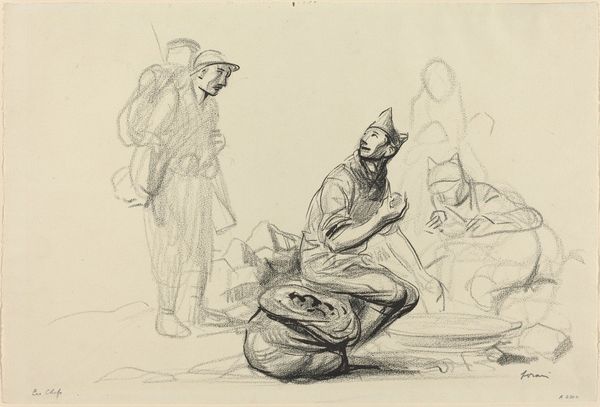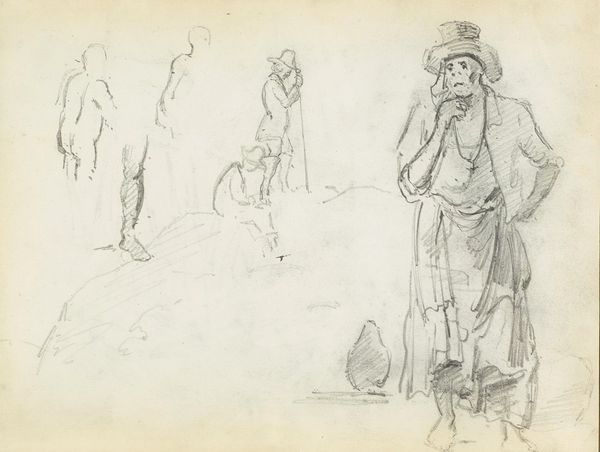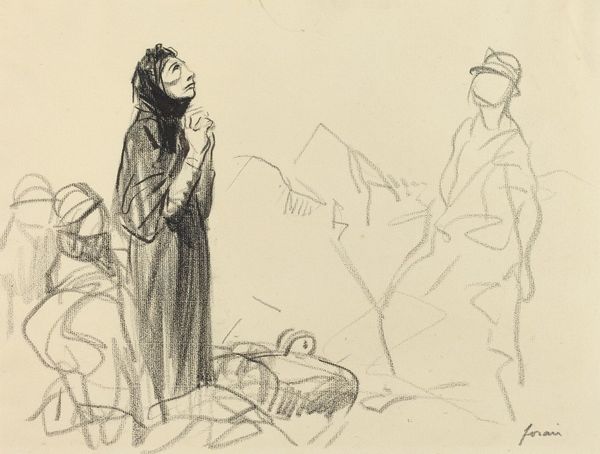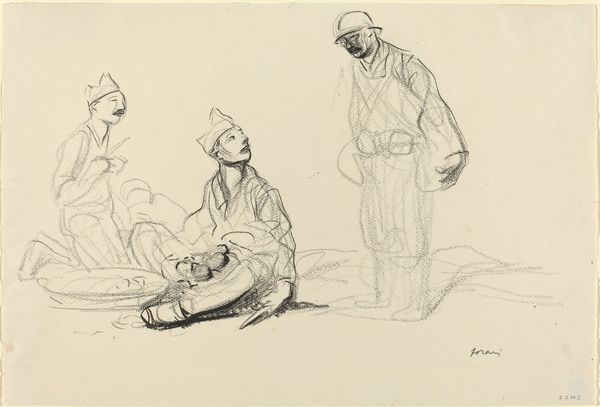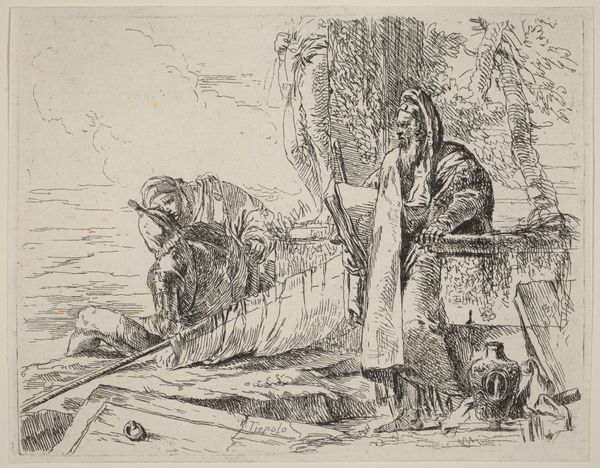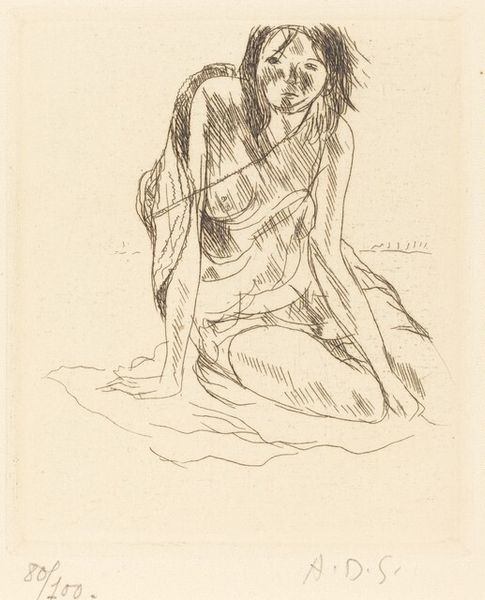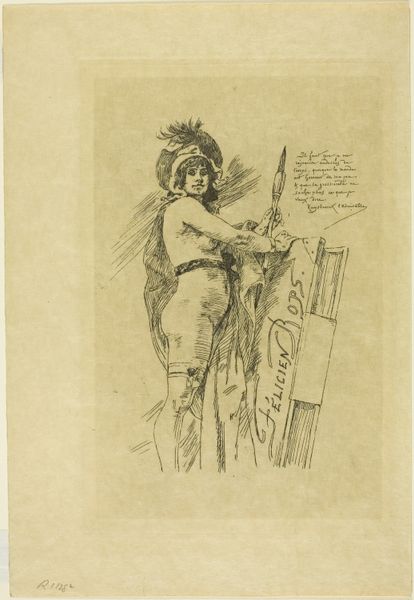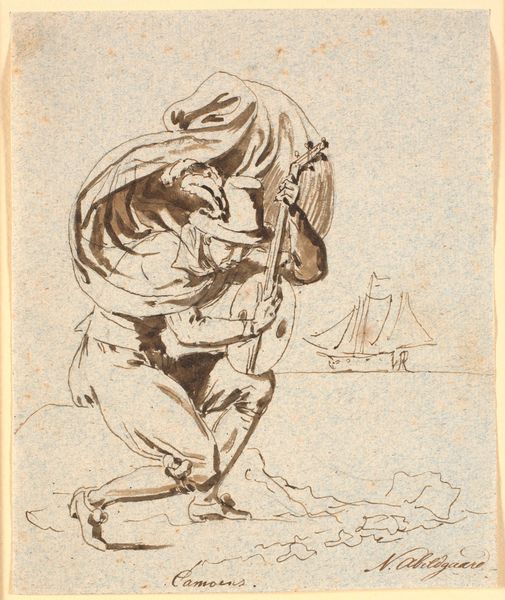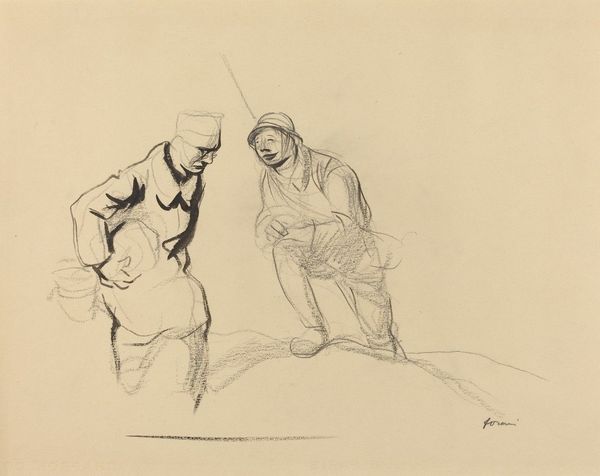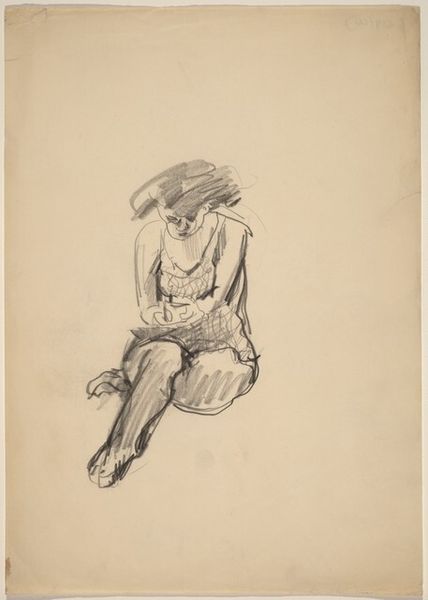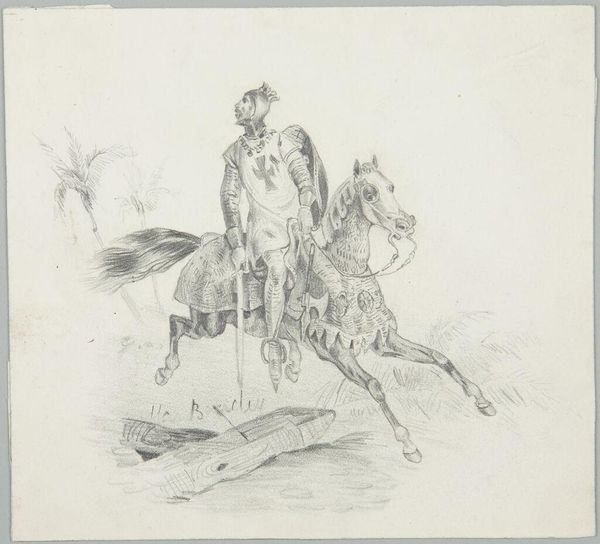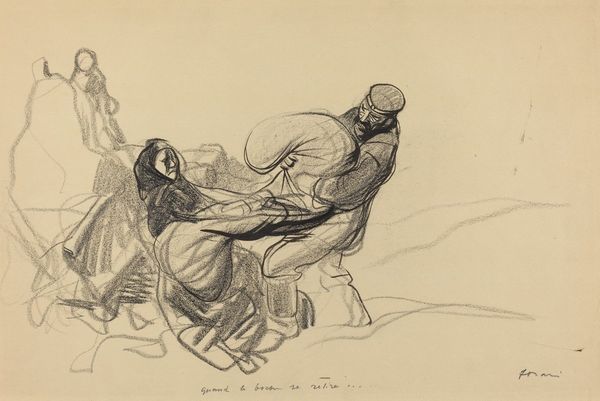
drawing, charcoal
#
portrait
#
drawing
#
pen sketch
#
figuration
#
expressionism
#
charcoal
Copyright: Public Domain: Artvee
Editor: This is Jean-Louis Forain’s drawing, “Grace!”, likely created between 1914 and 1919. It seems to be done in charcoal, a powerful pen sketch capturing raw emotion. What do you see in this piece? Curator: From a materialist perspective, consider the accessibility of charcoal during wartime. Forain likely chose this medium because of its cheapness and immediate expressiveness. This aligns with a trend where we begin to question established values through everyday materials. It becomes crucial to look at art beyond an individual. The print's reproducibility connects it directly to the masses and the mass media publications that brought war imagery home. What statement do you think Forain makes when using such available media to represent such an evocative and important part of our lives? Editor: It underscores the ubiquity of suffering, perhaps? That even cheap materials can carry immense weight, documenting something terrible so everyone could potentially have access. Do you think he's elevating charcoal drawing as a medium in doing so? Curator: Elevating the status is beside the point here. Rather, observe how readily available materials directly correlate to accessibility and wide consumption. The stark black and white amplifies the despair – perhaps Forain couldn't obtain colour? More likely, he actively choses the readily available supplies to underscore what these common men were experiencing! What do you suppose, would he rather create artwork exclusively for the elitists? Editor: I see your point. By considering the socio-economic aspects, we can really understand how even simple material choices can contribute to how a work is received and interpreted. Curator: Exactly! Examining the work from material and labor helps us to connect art making with greater social issues of production, dissemination, and consumption during times of both peace and great conflict.
Comments
No comments
Be the first to comment and join the conversation on the ultimate creative platform.
